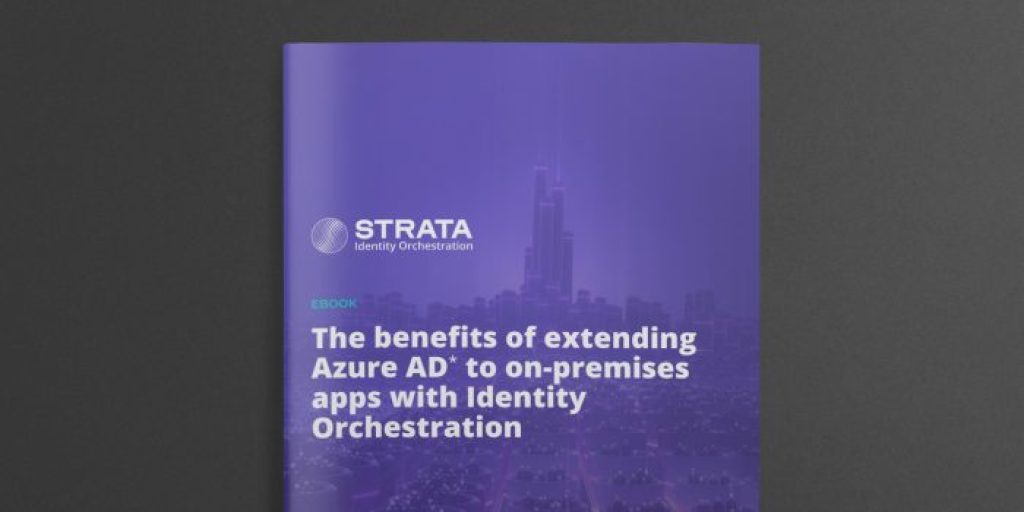App owners: Benefits of externalizing authentication & authorization

With cloud modernization, one of the most significant challenges for app owners is managing identity and authentication, which can divert attention from creating an exceptional product. For app owners and developers, it means continually juggling a myriad of responsibilities outside of their app’s core user experience design and functionality optimization.
The truth is many app owners struggle with implementing effective identity management solutions within their apps. This is often due to a lack of expertise or interest in this area, as their primary focus is on delivering a great user experience from their app’s core functionality. As a result, the identity part may not be what it should be and could even compromise the application’s security.
Thankfully, there’s a solution: leveraging third-party solutions for authentication and authorization.
In this article, we’ll explore the role of orchestration and interoperability in streamlining this process and how it can enhance the user experience. You’ll learn how app owners can shift the responsibilities to the right teams so they can focus on their core roles, ensuring a future-proof and secure digital environment.
Why move from a legacy IDP to a modern cloud identity solution?
While legacy identity providers (IDPs) have been helpful to app owners in the past, their limitations are much more visible as the threat landscape evolves and demand for modern digital applications soars. Consider: many legacy applications were created well before modern identity standards even existed – these apps could be 10 or 20 years old. Today, making the transition to a modern cloud identity solution offers considerable value for the organization and individual users.
First, it’s important to define who an application owner is. An application owner refers to a person or team responsible for ensuring that the software or set of software elements within the application meets the defined goals or user needs outlined for that application. Their responsibility also encompasses the implementation of suitable security measures.
By leveraging cutting-edge technologies and protocols, modern cloud identity solutions can provide faster, more reliable, and more intuitive authentication processes. This means that users benefit from features like single sign-on, multi-factor authentication (MFA), and passwordless login. In other words: enhance security, and simplify the login process.
The best news for app owners is that upgrading to a modern cloud identity solution can be achieved without requiring changes to existing applications.
This is achieved by using standards-based protocols and interfaces, which enable seamless integration with a wide range of applications and services, all without disrupting users or the development team.
Benefits of externalizing authentication and authorization from your app
We’ve discussed a few benefits above, but we’ll go into more detail in this section.
First, abstracting identity from your application allows for seamless migration from legacy Identity Providers (IDPs) without the need for refactoring. This means you can integrate new, cutting-edge authentication technologies, such as passwordless with HYPR, 1Kosmos, or Yubico, in a phased manner without disrupting your app’s core functionality. This flexibility enables your application to stay current with the latest security standards and best practices without the need for constant, time-consuming updates.
Externalizing authentication and authorization also allows you to easily add advanced identity capabilities to your app. Security features discussed above can be incorporated to enhance security and reliability without requiring major code rewrites. Finally, app owners can balance a great user experience with the level of protection required to defend against potential breaches and attacks.
Perhaps most importantly, externalizing these components can significantly and positively impact the bottom line. IDP end-of-support and lock-in is another financial consideration in abandoning a legacy IDP. For example, when a version of a legacy product is no longer supported but customers still need it because they have critical apps there, costs can be excessive for support contracts. App owners are often forced to stay locked into those contracts for multiple years.
Some businesses can save millions of dollars by moving away from legacy IDP licenses and support contracts, enabling them to invest more resources into other crucial areas, driving overall business value and growth.
Finally, compliance with IT standards becomes far more manageable when authentication and authorization are externalized. By delegating these responsibilities to dedicated solutions that already meet stringent security and privacy requirements, your application automatically benefits from the same level of compliance. This eliminates the need for additional effort or resources and ensures that your app stays aligned with industry regulations.
Orchestration, interoperability, and what it means for app owners
Orchestration enables app owners to focus on their core responsibilities while leaving identity management to the experts. With orchestration, app owners can simply specify the identity data their app needs (be it headers-based or including data from specific attribute stores), and orchestration takes care of the rest — freeing up valuable resources and time that would have been spent on developing and maintaining authentication services and identity mechanisms.
When Identity Orchestration is used to protect apps, the responsibility of identity management shifts to the security team, where it should be. The identity and security teams can ensure all users — whether they’re customers, partners, or employees — follow a standardized process for login, across all applications and that proper security measures are enforced consistently.
The power of interoperability with Identity Orchestration
Solutions like Strata’s Maverics Identity Orchestration Platform can effectively manage user logins and any time in the customer journey after, from multiple sources without requiring any integration with the application or among the various identity providers. For example, an app may need to authenticate a user using HYPR and access identity data from both Azure and Okta. With Identity Orchestration, the app owner doesn’t need to worry about integrating these services; the orchestrator handles it all seamlessly.
With Identity Orchestration, the user experience remains simple and straightforward. The user logs in with their chosen authentication method (e.g., HYPR), and the orchestrator fetches the necessary identity data from various sources (e.g., Azure and Okta) and attribute stores. The application receives the required information without having to know or care about where it came from, resulting in a smooth and frictionless experience for the user.
The power of interoperability offered by Identity Orchestration not only simplifies the user experience but also brings additional value to app owners.
Want to learn more about how Strata can immediately yield an ROI of at least 500%? Strata Identity interviewed 50 leaders at Fortune 1000 companies about their application identity migration and IDP modernization strategies. Read the report that outlines key takeaways from the interviews and real customer data that can help your organization achieve better and faster results from modernization.
Try Maverics for free and see why top enterprises use it to protect apps at scale





